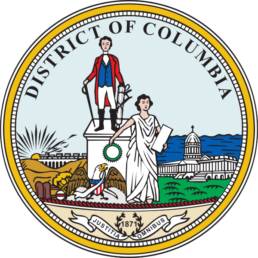The capital of the USA is making the most of its municipal buildings by installing solar PV panels, vegetation, and cooling measures on rooftops, making the city climate resilient and reducing CO2 emissions.
In Washington, D.C., they now have more than just roofs over their heads. The DC SmartRoof Program maximizes the potential of the roofs on all public buildings to minimize and battle the effects of climate change. The city is utilizing roofs of office buildings, schools, and hospitals, totaling more than 2.6 million m2. So far, nine megawatts of solar PV have been deployed, more than 204,000 m2 of white-colored, “cool roofs” have been constructed, and more than 37,000 m2 of vegetative roofs have been installed. The latter will be able to retain more than 360,000 liters of stormwater runoff annually, which earlier contributed to flooding caused by climate change-related extreme weather events.
350,000 metric tons of CO2 emissions avoided with the DC SmartRoof Program over 20 years
Cities100 – 2017
The program also seeks to reduce the urban heat island effect with its adapted roofs, as studies show that increasing the albedo of just under 100 m2 roof by 0.25 can offset 0.5 tons of CO2 equivalent per year, through reduced cooling demand. The nine megawatts of PV installed has further reduced CO2 emissions by approximately 5,000 metric tons in just over a year.

The challenge
Washington, D.C.’s overarching adaptation strategy identified four local climate change-related challenges: extreme heat events, extreme precipitation, sea-level rise, and storm surge. The DC SmartRoof Program is designed to mitigate emissions and adapt to these challenges.
Co-benefits
Economic The DC SmartRoof Program is expected to save $40.2 million, with $25 million from solar PV installations and $15.2 million from cool roofs. The program has also created more than 300 jobs and employed dozens of local companies.
Environmental Introducing solar into the power generation mix pushes out unhealthy fossil fuels responsible for other pollutants including particulate matter, nitrogen oxides, and mercury.
Health Installing cool and green roofs will help to reduce the urban heat island effect and the exposure of citizens to extreme heat conditions, whilst PV will contribute to improved air quality and lower rates of respiratory health issues.
About Washington, D.C.
Washington, D.C., commonly referred to as “Washington”, or simply “D.C.”, is the capital of the United States. Washington had an estimated population of 681,170 as of July 2016. Commuters from the surrounding Maryland and Virginia suburbs raise the city’s population to more than one million during the workweek.


